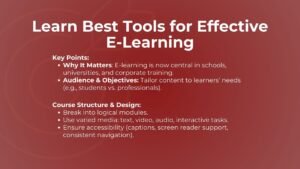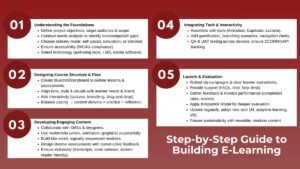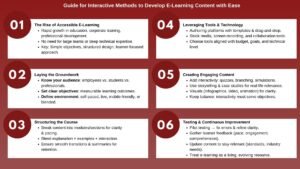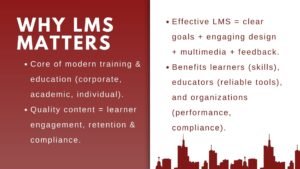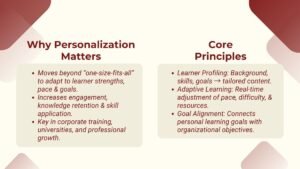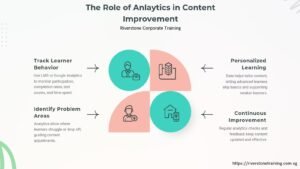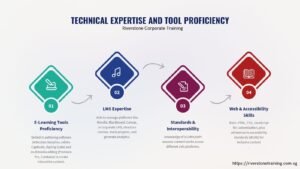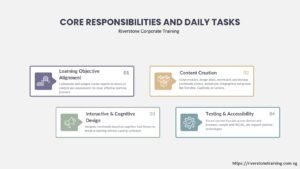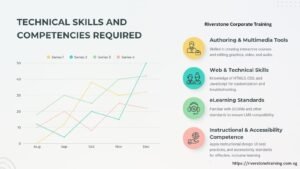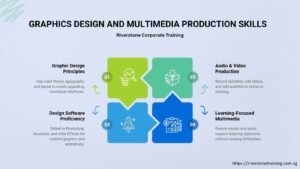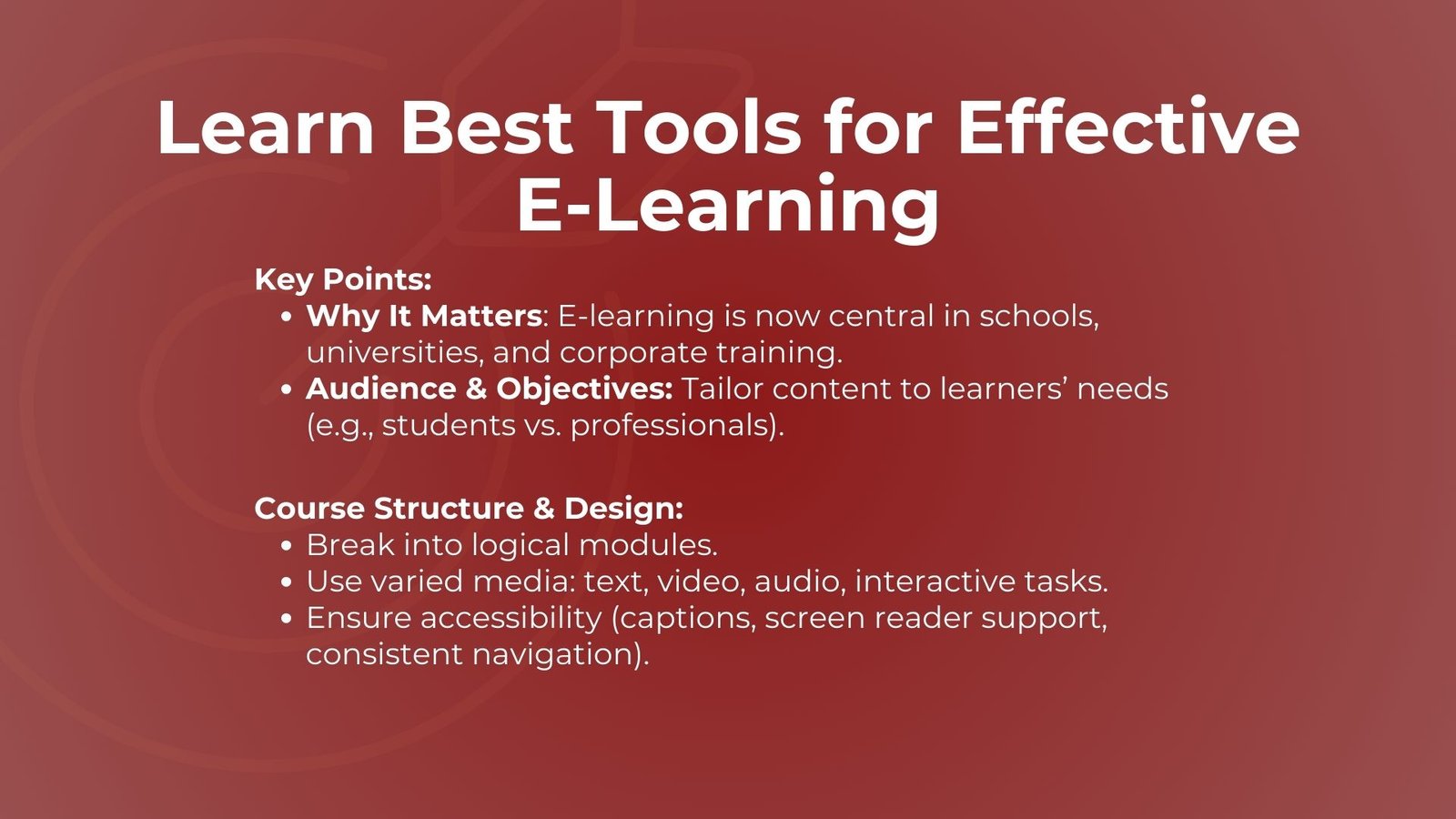
Best Tools for Easy E-Learning Content Creation
Best Tools for Easy E-Learning Content Creation
Introduction to E-Learning Content Creation
With the ascendency of digital learning, the delivery of education and professional training has been altered. E-learning has been no longer an optional tool but a central practice of the schools, university, and corporate spheres. Fundamentally, the development of e-learning content is a matter of preparing entertaining, enlightening and friendly materials to suit a wide range of learners. Armed with the proper plan, one should be able to create both effective and entertaining courses that will ease the educational process and make it more efficient. The goal could be to train workers, educate students or simply provide a set of skills-based services to the population but the fundamentals of the e-learning materials development can contribute to a more successful process.
The process is associated with planning, appropriate application of technology, and captaincy in knowing the needs of learners. It also involves the need to harmonise education aims with interactivity so as to ensure the attention of the learner is maintained throughout. Professionals seeking Online corporate finance training Singapore can also benefit from integrating modern digital platforms with well-designed materials developed by Interactive e-learning content creators Singapore.
Understanding Your Audience and Objectives
It is necessary to identify the learners and the learning objective before one commences the process of creation. The e-course construction that is to be the course of learning to students at a university will not be much similar to the course that is to be a course to corporate managers or perhaps new employees at a technical job. Knowing the audience would not only set the tone and the mode of the material but also the complexity of the content and the example that is used. Questions should give clear goals at the beginning, which can serve as a guide to the maker and the students.
As an illustration, a financial literacy course aimed at young adults may touch upon budgeting, savings and lead through the essentials of credit, whereas software developers training will involve training on technical aspects of problem-solving and practical coding tasks. Even the most attractive e-learning piece of work may fall short of achieving any significant outcomes without a proper vision of the target audience, as well as learning objectives.
Structuring and Designing the Course
An effective e. learning program is logically organized, and therefore learners find it easy to go through the contents of the program. The initial one is splitting the subject matter into manageable modules or sections, with each of them covering one topic or skill. There should be a logical sequence of building these modules on each other so that the learners move on to acquire knowledge in sequential order. A smart design adopts a diversity in the kinds of content, including text, audio, video, interactive exercise to engage the various learning styles.
Layout and navigation consistency also matters because the learners should concentrate on the material instead of orientating themselves on how to navigate the course. The color, typography and images all must be used purposefully to enrich the understanding, as opposed to confusing it. Another major factor is accessibility, where learners with disabilities have the chance to access the material using closed captions, compatibility with screen readers and font sizes.
Incorporating Interactivity and Engagement
Among the shortcomings of e- learning is the need to induce engagement amongst learners even when the instructor is not present in person. To overcome this challenge, the essence of interactive elements is required. Quizzes, drag-and-drop tasks, branching scenarios, and simulations will allow turning passive information intake into active playing. Using an example of a customer service training module, a branching scenario can be used where the learner is to explore various customer complaints and make decisions on how he should react and feedback would be given depending on his choice.
Motivation can also take place through gamification where badges, points, and leaderboards could increase the drive, especially among competitive learners. The use of stories is also a strong approach to engagement as narratives enable learners to become emotionally engaged with the material and therefore easier to memorize. The trick is to find a happy medium by not making the interactivity too little or too much because this can be dull or overload the learners respectively and the major goals of the course would be lost.
Selecting the Right Tools and Technologies
What is important in e-learning content creation is the application of the tools that would contribute to the quality and accessibility of the final product. Articulate Storyline, Adobe Captivate, iSpring Suite, and other authoring tools enable the author to create pro, interactive courses without deep knowledge of code. Learning management systems (LMS) are required in delivering the content, monitoring learner progression and keeping material in the courses. Examples of these systems are Moodle, Canvas, and Talent LMS.
Graphics design programs and audio recording applications may also be utilised in order to provide a polished multimedia output, which will further enrich the learning experience. Moreover, collaboration platforms delivered in the cloud help teams collaborate easily, even in cases where the team members are distributed in separate locations. The tools used must also match the available budget as well as the technical expertise of the content developers so that the final product is maintainable and could be updated in the long run.
Testing, Feedback, and Continuous Improvement
Designing an e-learning course is not a brisk and once-upon-a-time activity, but rather a cyclic process of trial & error, test responses, and refinement. Prior to introducing a course to the population, it is helpful to pilot it among a small group of learners who ought to represent a target population. Their comments may point out the need to clarify instructions, technical aspects, or topics that are difficult or easy. This testing stage becomes very important to perfect the content and also the mode of delivery. After making the course available, it should be tracked to help understand the performance and engagement data of the learners to pinpoint what needs additional enhancement.
As an example, when many learners quit once a certain module is reached, it is possible that the module is too complicated and not interesting in the eyes of the learners. The constant updating maintains the content current and in fields like technology, finance, and healthcare which require a lot of updating. Through the attitude that we are always trying to make things better, the makers of e-learning will manage to maintain their courses effectively and useful throughout the years.

Conclusion: Simplifying the E-Learning Creation Process
Creating e-learning content can appear as a complicated task initially, however, in case the audience needs are thoroughly comprehended, the course developed using suitable software, interactions facilitated with the desire to improve on a constant basis, then the process can be made simple and satisfying. The end product is to ensure that the learning experience is such that it is not just conveying information but also motivating the learners to make use of the information in the real world.
By combining the educational and experiential forms, creators can be sure that their courses will become recognizable and successful in the more competitive realm of digital learning. E-learning, with the appropriate approach could prove to be an undeniably useful source of knowledge transfer, skill enhancement, and life/career proliferation. This is similar to how Financial modeling certification training Singapore professionals ensures skill advancement and practical application in the finance sector.



